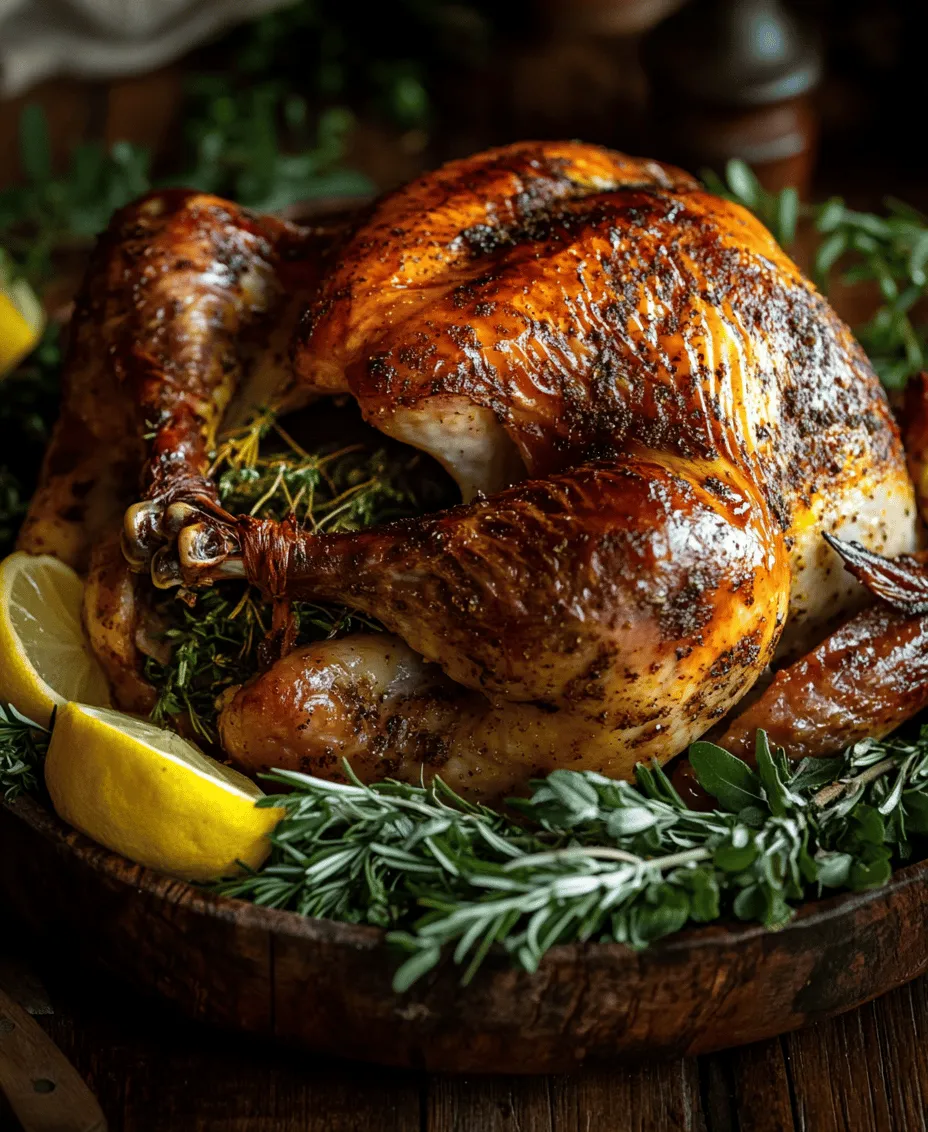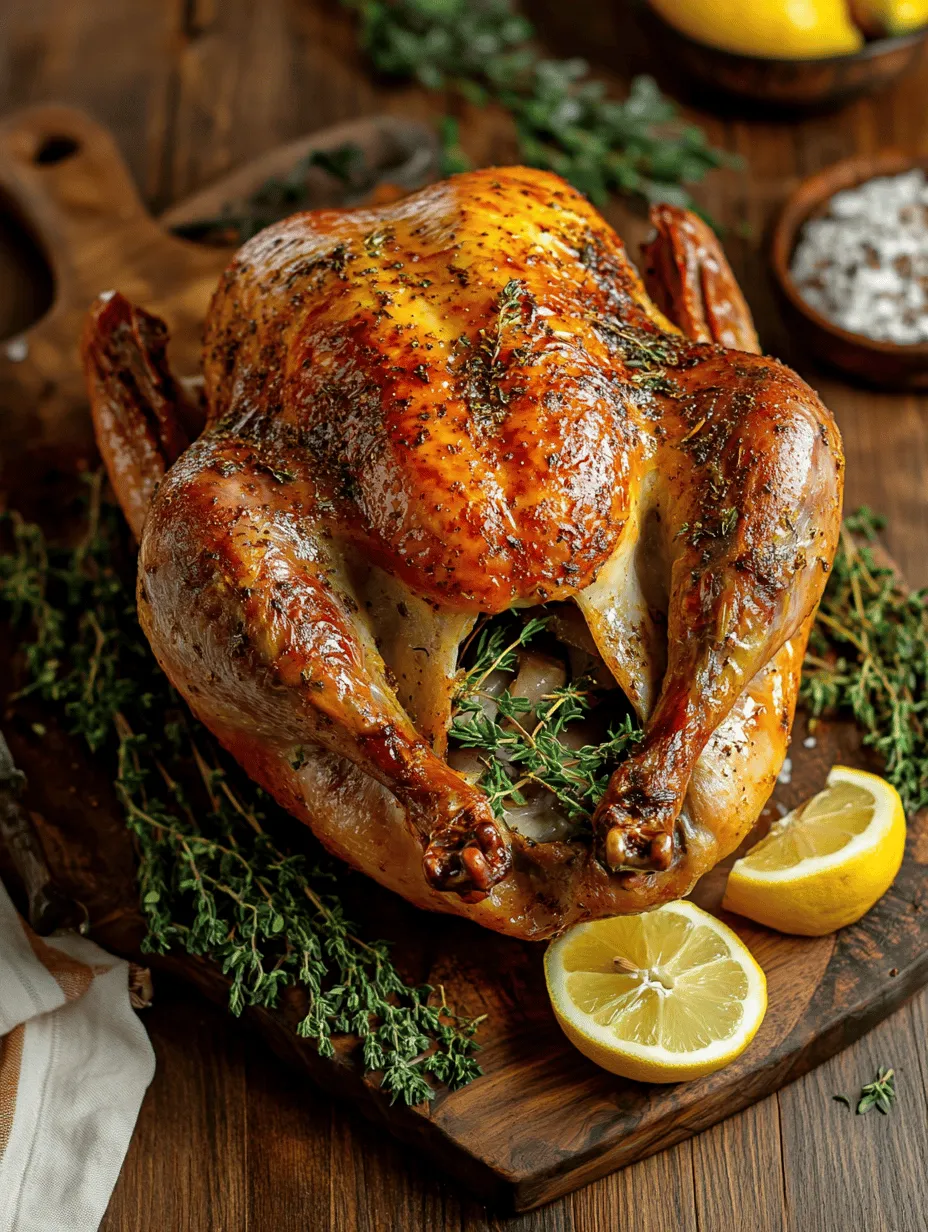Introduction
Thanksgiving is a cherished holiday in many households across the United States, celebrated with family gatherings, festive decorations, and, most importantly, a sumptuous feast. At the heart of this annual tradition is the turkey, often the centerpiece of the dining table. For many, the success of Thanksgiving dinner hinges on the ability to prepare a turkey that is not only visually appealing but also tender, juicy, and bursting with flavor.
In recent years, dry brining has emerged as a popular technique for achieving that sought-after juicy turkey. Unlike traditional wet brining, which involves soaking the turkey in a saltwater solution, dry brining utilizes a simple mixture of salt and spices rubbed directly onto the turkey. This method enhances the turkey’s natural flavors while ensuring that it retains moisture during the cooking process. The result? A turkey that is not only delicious but also easy to prepare, allowing you to focus on enjoying the festivities with your loved ones.
This article serves as a detailed guide to making an easy dry brined turkey that is sure to impress your guests and elevate your Thanksgiving feast. We will delve into the science behind dry brining, how to choose the right turkey, the essential ingredients you’ll need, and provide step-by-step instructions for preparing your bird.
Understanding Dry Brining
To fully appreciate the benefits of dry brining, it’s important to understand what it is and how it differs from other methods of preparing turkey. Dry brining involves applying a mixture of salt and spices directly onto the surface of the meat, which is then left to rest for several hours or overnight. The salt draws moisture out of the turkey, but as it sits, that moisture is reabsorbed along with the salt and flavors from the spices. This process enhances the flavor and texture of the meat without the need for a messy brining solution.
One of the primary advantages of dry brining is the enhanced flavor it provides. The salt penetrates the meat, seasoning it deeply, while the spices contribute additional layers of flavor. Furthermore, dry brining can improve the texture of the turkey, resulting in a more tender and juicy final product. Unlike wet brining, which can sometimes lead to overly salty meat or a soggy texture, dry brining creates a flavorful crust on the skin that crisps up beautifully during roasting.
From a scientific perspective, the process of brining involves osmosis and diffusion. When salt is applied to the turkey, it begins to draw out moisture from the meat. This moisture, now mixed with the salt and spices, is then reabsorbed, effectively seasoning the turkey from the inside out. This unique interaction between the salt and meat is what makes dry brining an effective technique for enhancing the overall flavor and juiciness of your turkey.
Choosing the Right Turkey
When it comes to selecting the perfect turkey for your dry brining adventure, there are several factors to consider. The first is size. A general rule of thumb is to allocate about 1 to 1.5 pounds of turkey per person. For example, if you are hosting a gathering of eight people, a turkey weighing around 12 to 14 pounds should suffice.
Next, consider the type of turkey you want to purchase. Organic and free-range turkeys are often favored for their superior flavor and quality. While these options may come at a higher price point, many home cooks find that the taste is worth the investment. Additionally, if you have the opportunity to purchase a fresh turkey, you should take advantage of it. Fresh turkeys tend to have a more robust flavor compared to frozen ones.
Thawing your turkey properly is crucial to ensuring a safe and successful cooking experience. If you choose to purchase a frozen turkey, be sure to allow ample time for it to thaw in the refrigerator. A general guideline is to allow 24 hours of thawing time for every 4 to 5 pounds of turkey. For example, a 12-pound turkey will require approximately three days to thaw completely in the fridge. Ensure that the turkey is placed on a tray or in a container to catch any drippings during the thawing process.
Ingredients Breakdown
Now that you have chosen the right turkey, it’s time to gather the essential ingredients for your dry brine. Here’s a detailed breakdown of the main ingredients you’ll need:
– Kosher Salt: The backbone of the dry brine, kosher salt enhances the turkey’s natural flavor and aids in moisture retention. Its larger crystals make it easy to sprinkle evenly over the turkey.
– Black Pepper: A staple in many kitchens, black pepper adds a subtle heat that balances the richness of the turkey. Freshly ground black pepper is recommended for the best flavor.
– Garlic Powder and Onion Powder: These aromatic powders introduce depth and complexity to the brine. They infuse the turkey with savory notes that complement the other spices.
– Dried Thyme and Rosemary: These classic herbs are known for their aromatic qualities. Thyme and rosemary pair beautifully with turkey, imparting a fragrant and flavorful essence.
– Smoked Paprika: This ingredient adds a hint of smokiness, elevating the flavor profile of the turkey. It also contributes a beautiful color to the skin when roasted.
– Olive Oil: A drizzle of olive oil before roasting helps to achieve a crispy, golden skin. It also aids in flavor development and moisture retention.
– Fresh Herbs and Lemon: While not part of the dry brine, fresh herbs and lemon can be used to stuff the turkey cavity, imparting additional flavors as it cooks.
Having a clear understanding of each ingredient’s role in the brining process will not only enhance the flavor of your turkey but also equip you with the knowledge to customize the brine to suit your taste preferences.
Step-by-Step Instructions
Preparing the Turkey
Before diving into the brining process, it’s essential to prepare the turkey properly. Start by removing the turkey from its packaging and placing it in a clean sink or on a large cutting board. Check the cavity for giblets and neck parts that may have been included; these can typically be found in a small bag and should be removed before proceeding. If you’d like to save these for making gravy or stock, set them aside.
Next, rinse the turkey under cold running water to remove any residue. Pat the turkey dry thoroughly with paper towels, as moisture on the surface can hinder the brining process. Proper drying is crucial for achieving that coveted crispy skin during roasting.
Making the Brine Mixture
Now that your turkey is prepped, it’s time to create the dry brine mixture. In a mixing bowl, combine the kosher salt with the black pepper, garlic powder, onion powder, dried thyme, rosemary, and smoked paprika. Use a whisk or fork to ensure that the ingredients are evenly distributed.
Feel free to get creative with your dry brine by adding personal touches. If you have favorite spices or herbs, consider incorporating them into the mixture. For example, adding a pinch of cayenne pepper can introduce some heat, while herbs like sage or oregano can provide a unique flavor twist.
Once you’ve mixed your dry brine, it’s time to season your turkey. Generously rub the brine mixture all over the turkey, making sure to cover every nook and cranny. Pay particular attention to the cavity, as this is where much of the flavor will be absorbed during the resting period.
After applying the brine, place the turkey on a rimmed baking sheet or in a large roasting pan. Cover it loosely with plastic wrap or a clean kitchen towel, allowing it to rest in the refrigerator for at least 12 hours, and ideally up to 24 hours. This resting period is essential for the brining process to take effect, ensuring that your turkey is bursting with flavor and moisture when it’s time to roast.
By following these initial steps, you’re well on your way to creating an easy dry brined turkey that will be the star of your Thanksgiving dinner. With the right preparation and a little patience, you can look forward to serving a beautifully roasted turkey that is sure to impress your guests and create lasting memories around the dinner table.

Applying the Dry Brine
To achieve a succulent and flavorful turkey, the application of the dry brine is crucial. Start by taking your brine mixture—typically composed of kosher salt, sugar, and a blend of spices—and rub it generously all over the turkey. It is essential to ensure that the brine penetrates into the meat thoroughly for maximum flavor.
Techniques for Rubbing the Brine:
1. Under the Skin: Carefully separate the skin from the meat using your fingers or a spoon. Gently lift the skin over the breasts and thighs to create pockets, then apply the brine directly onto the meat, avoiding any tearing of the skin. This technique allows the salt to draw out moisture and flavor the meat from within.
2. Cavity Seasoning: Don’t forget to season the cavity of the turkey. Sprinkle some of the dry brine inside, as well as adding aromatics like garlic cloves, onion halves, or even fresh herbs. This step is vital because it enhances the flavor throughout the turkey, ensuring that every bite is delicious.
Refrigeration Process
After applying the dry brine, the next phase is refrigeration. This process is where the magic happens. As the turkey sits with the brine, the salt works to break down proteins in the meat, allowing it to absorb the flavors and retain moisture.
Guidance on Refrigerating:
– Store Properly: Place the turkey on a tray or in a pan to catch any drippings. Ensure it is uncovered in the refrigerator; this helps the skin dry out, which is essential for achieving that crispy skin during roasting. Ideally, let the turkey brine for 24 to 48 hours for optimal results, but even a few hours is better than none.
Preparing for Roasting
Before roasting, it’s crucial to let your turkey come to room temperature. This step helps ensure even cooking throughout the bird.
Preheating the Oven: Preheat your oven to 325°F (163°C). This temperature is optimal for roasting turkey, allowing it to cook evenly without drying out.
Stuffing the Turkey
Stuffing the turkey cavity with fresh herbs and lemon can elevate the flavor profile significantly.
Techniques for Stuffing:
– Fresh Herbs: Use a combination of rosemary, thyme, and sage for a fragrant infusion. These herbs will release their oils during roasting, permeating the meat with aromatic goodness.
– Lemon: Halve a lemon and place it inside the cavity alongside the herbs. The citrus will add a bright flavor and keep the meat moist.
Olive Oil Application
To achieve golden-brown, crispy skin, brushing the turkey with olive oil is essential.
How to Apply Olive Oil:
– Use a pastry brush or your hands to coat the skin evenly with olive oil after seasoning. This helps to achieve that beautiful, crispy finish as the turkey roasts, enhancing both texture and flavor.
Roasting the Turkey
Now for the exciting part—roasting your turkey!
Detailed Roasting Instructions:
1. Place the turkey breast side up in a roasting pan.
2. Insert a meat thermometer into the thickest part of the thigh without touching the bone—a reading of 165°F (74°C) indicates that the turkey is fully cooked.
3. Roast the turkey, basting it with its own juices every 30 to 45 minutes. Basting helps to keep the meat moist and adds to the flavor.
Resting the Turkey
Once your turkey reaches the desired temperature, take it out of the oven and let it rest for at least 30 minutes.
Why Resting is Crucial: Resting allows the juices to redistribute throughout the meat, resulting in a juicy and tender turkey. If you carve it too soon, the juices will run out, leaving you with dry meat.
Serving Suggestions
Now that you have a beautifully roasted dry brined turkey, it’s time to think about how to serve it.
Side Dishes: Pair your turkey with classic side dishes like:
– Creamy mashed potatoes
– Roasted seasonal vegetables
– Green bean almondine
– Stuffing or dressing made with bread and herbs
Sauces and Gravies: A rich gravy made from the turkey drippings will complement your turkey perfectly. For a refreshing twist, consider serving cranberry sauce or a citrus-based sauce for a pop of brightness.
Presentation Tips: When serving, carve the turkey into slices and arrange them on a platter. Garnish with fresh herbs or slices of lemon for an attractive presentation.
Common Mistakes to Avoid
When preparing your dry brined turkey, be aware of common pitfalls that could affect the outcome.
1. Skipping the Refrigeration: Not letting the turkey sit with the brine long enough can result in less flavorful meat.
2. Not Drying the Skin: If the skin is not dry before roasting, it can become rubbery rather than crispy.
3. Overcooking: Monitor the internal temperature closely to avoid dry meat. Using a meat thermometer is crucial.
4. Carving Too Soon: Remember to let the turkey rest—this is essential for juicy results.
Conclusion
Dry brining your turkey is a simple yet effective way to enhance flavor and moisture, resulting in a spectacular centerpiece for your holiday table or any special occasion. The process may take some time, but the rewards of serving a deliciously prepared turkey are well worth it.
As you try this recipe, feel free to make it your own by experimenting with different herbs and flavors. Cooking is about joy and creativity, and sharing a lovingly prepared turkey meal with your loved ones is one of life’s great pleasures. Embrace the process, enjoy the flavors, and create lasting memories around the dinner table.

